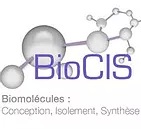Detailed objectives
The MIACYC project is divided into 3 steps :
Step 1 - Identification of new scaffolds of MIA at the cellular level using metabolomic innovative tools
The MIAs are highly complex molecules and although a large amount of knowledge has been accumulated concerning their production by the plants, many questions are still unanswered. The discovery of new MIA structures may illuminate unexpected enzymes involved in their biosynthesis.
Recent advances in analytical chemistry (in particular mass spectrometry) and in bioinformatics allowed the development of fully digitized new natural products within complex mixtures. In our project, we’ll use Imaging Mass Spectrometry (IMS) to assess the spatial distribution of metabolites at a cellular scale. These informations might serve as an entry point for cell-type resolved transcriptomics to bridge chemical profiles to upstream cellular events at the genetic level. Single cells would be achieve through Laser-Capture Microdissection technology. Downwards, computer-based molecular networking approach would allow visualizing and organizing analytical chemistry data sets and automate database searches for metabolite identification. Through this integration of metabolomics with genome-based functional characterizations of gene products, we’ll would discover new MIA scaffolds, produced by the activity of new or unexpected enzyme family that would give us clues to elucidate biosynthetic pathways.
Step 2 - Identification of the key enzymes involved in the biosynthesis of C-Nindole MIAs
This part of the project aims to identify new genes encoding proteins catalyzing MIA biosynthetic steps by to performing spatial transcriptomics. It means that we would analyse the genome assembly and RNA-seq from tissue-specific libraries and single cells.
This approach is tightly linked to the analysis of deep spatially resolved metabolome as single cell transcriptomics will be generated from cell populations according to spatial metabolic date previously generated. We’ll also screen with analytical chemistry networking plants those MIA pathway has been activated by biotechnological tools. Through bioinformatics analysis, we would identify candidate genes from expression data through correlation networks.
Step 3 - Production in microbes of targeted MIA using genes encoding enzymes involved in C-Nindole alkaloid metabolism
The targeted alkaloid would be heterogously product using genes encoding enzymes involved in C-N indole alkaloid metabolism.
Candidate genes provided by our combined approaches will be first functionnaly validated by transient heterologous expression in yeast and in Catharanthus roseus, a well-known non-model plant. Active enzymes will be further combined into yeast to reconstruct partial or full biosynthetic pathways.
MIACYC


